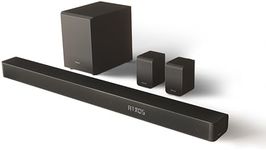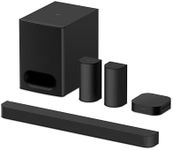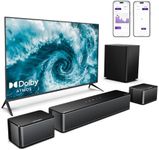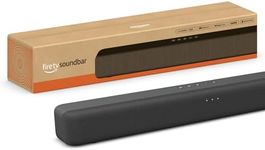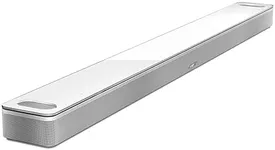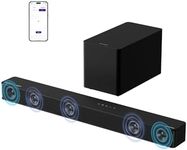Buying Guide for the Best Soundbars
Choosing the right soundbar can significantly enhance your audio experience, whether you're watching movies, playing games, or listening to music. Soundbars are designed to provide better sound quality than your TV's built-in speakers, and they come in various sizes and configurations to suit different needs. To make an informed decision, it's important to understand the key specifications and how they relate to your personal preferences and usage scenarios.ChannelsChannels refer to the number of audio output sources in a soundbar. Common configurations include 2.0, 2.1, 3.1, 5.1, and even 7.1. A 2.0 soundbar has two channels (left and right), while a 2.1 adds a subwoofer for better bass. Higher numbers like 5.1 and 7.1 include additional speakers for surround sound. If you want a more immersive experience, especially for movies and gaming, opt for a higher channel count. For casual TV watching or music, a 2.0 or 2.1 might suffice.
ConnectivityConnectivity options determine how you can connect your soundbar to other devices. Common options include HDMI, optical, Bluetooth, and Wi-Fi. HDMI ARC (Audio Return Channel) is often preferred for its high-quality audio and ease of use. Optical connections are also good for high-quality sound but lack some advanced features. Bluetooth and Wi-Fi allow for wireless streaming from smartphones and other devices. Choose a soundbar with connectivity options that match your existing devices and how you plan to use it.
SizeThe size of the soundbar should be proportional to the size of your TV and the room where it will be used. Larger soundbars generally offer better sound quality and more features, but they can be cumbersome in smaller spaces. Measure the space where you plan to place the soundbar and ensure it fits comfortably without obstructing your TV or other devices. If you have a large room or a big TV, a larger soundbar might be more appropriate to fill the space with sound.
SubwooferA subwoofer is a speaker dedicated to reproducing low-frequency sounds, adding depth and richness to the audio. Some soundbars come with built-in subwoofers, while others include separate, external subwoofers. If you enjoy bass-heavy music or want a more cinematic experience, a soundbar with a subwoofer is a good choice. Consider whether you have space for an external subwoofer or if a built-in option would be more convenient.
Smart FeaturesSmart features in soundbars include voice assistants like Alexa or Google Assistant, app control, and integration with smart home systems. These features can add convenience and functionality, allowing you to control your soundbar with voice commands or integrate it into your smart home setup. If you value ease of use and advanced functionality, look for soundbars with these smart features. If you prefer a straightforward audio experience, you might not need these extras.
Audio FormatsSoundbars support various audio formats like Dolby Digital, DTS, and Dolby Atmos. Dolby Digital and DTS are common formats that provide good surround sound. Dolby Atmos is more advanced, offering a 3D audio experience with sound coming from above and around you. If you want the best possible audio experience, especially for movies and high-quality content, look for soundbars that support Dolby Atmos. For general use, Dolby Digital or DTS might be sufficient.

